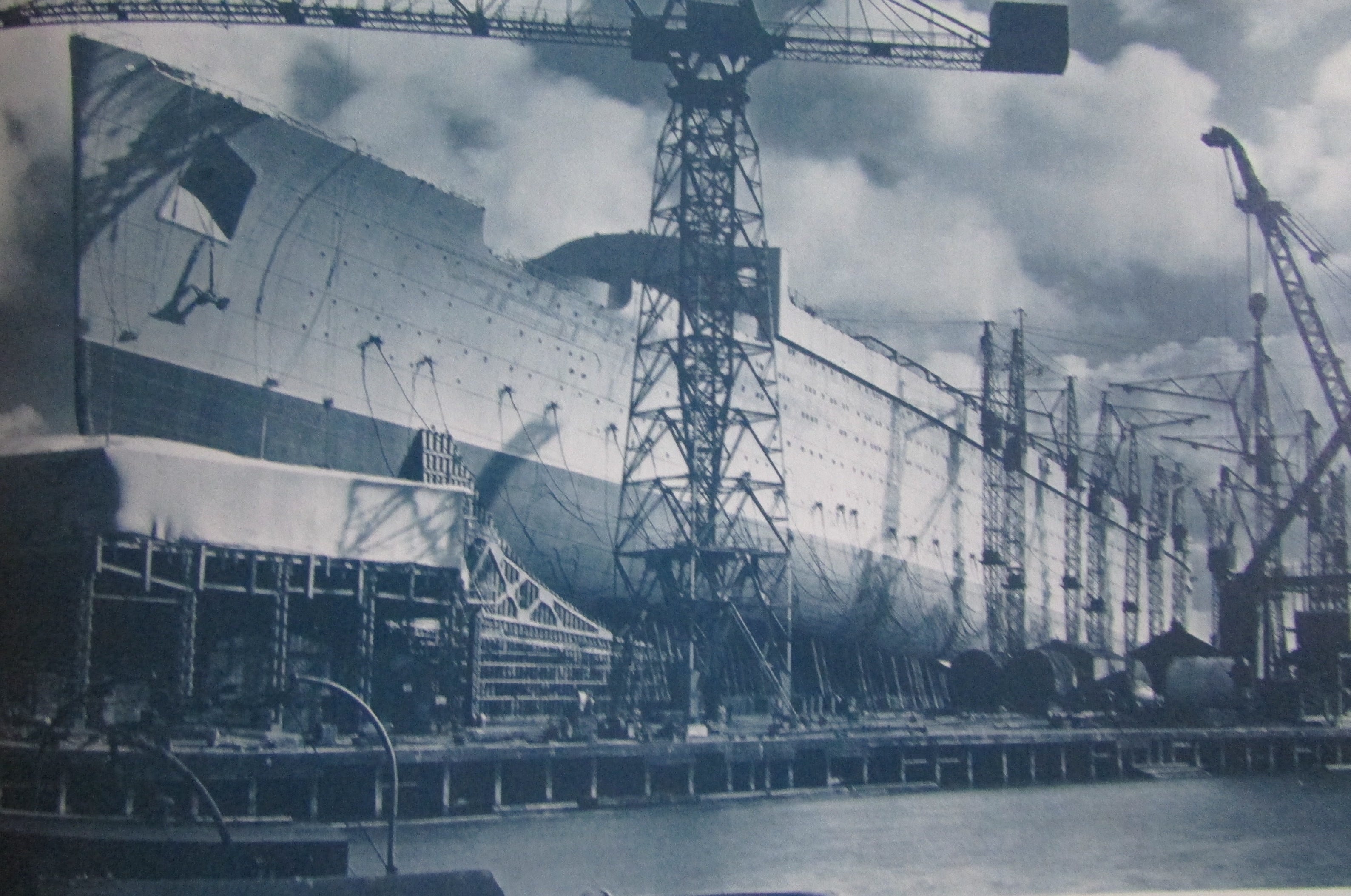2 Ships – 1 Destination – 2 Very Different Endings
Published 1:10 pm Sunday, October 8, 2023
|
Getting your Trinity Audio player ready...
|
Recent publicity has centered upon a private company’s submarine that imploded while going down 13,000 feet, under the cold Atlantic Ocean waters. It’s mission was to take some passengers down under the ocean and take a look at the grave of the famous ocean liner, “Titanic”. Some say that the reason it did not complete its mission was caused by the ghosts of the over 1,500 souls who lost their lives when this “unsinkable” liner went down. Where they sending a message that stated: Do Not Disturb?
I thought that you would enjoy reading about the sinking of the “Titanic” and what has been determined to be the real life happening including the cause and effects along with it. However, have you ever heard the story about the other ship that was moored right next to the “Titanic” in the harbor at Southampton, England? Both left within minutes of each other and both were headed to New York. That second ship, was called the “Success”, and was a very different type of ship and also had a very different, but tragic outcome. As we know, the “Titanic” did not make it to the docks in New York City, but the older ship, “Success”, did.
Let me tell you the story of these two ships whose paths crossed as they shared some similarities but their lives ended so very differently. We should be on the banks of the Flint River and will need some hot coffee and buttered cornbread, along with a powerful flash light and lots and lots of courage.
On April 10, 1912, these two very different ships set out from Southampton, bound for New York City. One was a shiny new liner called, “Titanic”. She was famous for her elegance and stately beauty. The other ship was named the, “Success”. She was 119 years old, when she started out on this voyage. She was not known for her elegance or beauty. Quite the contrary, for she was nicknamed the “Ocean’s Hell”, by those who had served, as well as sailed, on her.
During the construction of the “Success” in 1790, no expense was spared. Built in Natomas, Burma, for the Cockerel & Company of Calcutta, her keel was made from ironwood, hauled by elephants through the dense, matted foliage of the Burmese jungle. Next, teakwood timbers of tremendous size were added as ribs and also in the building of the hull. When finished, this ship was 135 feet long and weighed 600 tons.
As for the “Titanic”, much was written about her and her elegance, which made her the pride of one of Britian’s leading steamship builders, the White Star Line. In 1911, she was the largest ship for her time. She was 882 feet long and 92 feet wide, and tipped the scales at 46,000 tons.
To make her extra sturdy, a second bottom had been built into the hull, with transverse watertight bulkhead’s spaced along the length, dividing her into 16 watertight compartments. The engineers that designed her felt that she could float with four of these completely flooded. They also felt that this would be more than enough to ensure the safety of the ship. Any water that got through the double bottom would be contained in these compartments. They believed that this would make the “Titanic” unsinkable.
The “Success” was also considered a beautiful ship in her time. She was decorated with very fancy carvings and the decks were treated with a special oil which was hand rubbed into the timbers until they glowed.
She was considered the pride of the English trading fleet. Her cargo was only the best and most expensive in the world. The “Success” carried only the most precious cloths of that time, like silks that came from India, gemstones from the Orient and gold and diamonds from the mines in Africa. All this was carefully stowed in the immaculate cargo hold, which was so clean that you could eat off of its floor.
Like the “Success”, the “Titanic” was a queen. She was a large and most beautiful ship. Her owners were full of confidence that nothing could happen to her because she was the best built liner crossing the Atlantic Ocean. Therefore, the decks were not “cluttered” with lifeboats. The builders believed that this modern ship had gone beyond needing these out-of-date items. Therefore, the “Titanic” carried only 16 lifeboats with four collapsible boats as backups. This was on a ship that was certified to carry 3000 folks. However, the life boats could only carry 1700 passengers. This was quite a difference.
Just the same, the owners put all of their emphasis on luxury and opulence, and “Titanic” embodied those traits. Her salons and dining rooms were decorated with the best lead crystal chandeliers. Artwork, painted by the famous masters of this time, adorned the bedrooms and hallways. Gourmet meals were served on the finest of china and were accompanied by leaded crystal glassware. The staterooms contained the finest of Egyptian linens and silks imported from the Orient. Even the third-class cabins were comfortable, though not as opulent as the first-class ones. Now, here is where our two ships diverge.
At first, “Success” sailed the ocean in splendor, unaware of the hideous changes which were in her future. Then, in 1802, while docked in Liverpool, England, several men came on board. They walked all over the decks, checking, touching and picking at the timbers of her hull with long, sharp knives.
There was no time to breathe or even speculate, for the very next day workmen came on board her. They pounded and sawed as they rebuilt the cargo hold. When they were done, everything was different and not in a good way. Heavy iron bars and thick wooden doors were installed as part of creating cells which were 4 feet by 4 feet and now lined the cargo hold. Then, more were added and these were stacked one on top of the other. The “Success” had become a floating prison!
For 49 horrible years, she carried her cargo of 150,000 prisoners, from England to Australia. The once glorious decks were gouged and stained with the knives of the guards and the blood of prisoners who were beaten and murdered. The teakwood hull, which was impervious to the salt water of the ocean, was not impervious to suffering. It absorbed the stale smell of human sweat and despair. This, and many more atrocities, created an odor that was absorbed and never left the ship.
Eventually, the prison cells in Australia became overcrowded and the “Success” became one of the prisons that was tied to the docks in this country that was being populated by criminals from England.
When the “Success” was 78 years old, the king of England finally instituted prison reform and these floating prisons were eliminated. By now, the “Success” was in horrible shape and was scheduled to be taken out and scuttled at sea. However, because of a clerical error, she was instead refitted and turned into an ammunition storage ship.
She did not mind the feel of the cold metal of the ammo on her decks and down in her hold. In fact, she welcomed it as it helped to heal her soul. However, after four years, when she 82 years old, she was once again scheduled to be scuttled. This time she was.
However, when the “Success” turned 100 years old, she was bought by a showman who had her raised. She was now turned into a floating exhibition of horrors and sailed all over the world as a testimony to one of Britain’s darkest times in history.
Then, at 113 years old, the “Success” was bought by Harry Van Tack. After awhile he wanted to expand his show and scheduled her to sail from the harbor in Southampton, across the Atlantic to New York Harbor. This is when our two ships met each other.
The “Success” set out under her own sails on April 10, 1912. This was the very same day and from the very same harbor, that the “Titanic” also headed out to sea, but for her it was her maiden voyage.
History tells us that the “Titanic” did not even leave the port that day, before there was trouble. While she was steaming slowly through the harbor, she passed too close to two other steamships that were moored at their docks. In the huge wake caused by the “Titanic”, a smaller vessel, the “New York”, was snapped from her ropes. She was pulled away from the dock and sucked into the huge wake that the “Titanic” was making. The “New York” drifted helplessly towards the “Titanic”, which pulled her relentlessly along by the suction caused by the great liner. The stern of the smaller vessel swung around towards that of the larger ship and just barely missed crashing into it. She then drifted along the entire length of “Titanic’s” port side, separated from her by only a few feet. Only quick work by several tug boats prevented a collision in the harbor. Thus, the journey for the “Titanic’ had begun. Doesn’t it seem like an omen, for a ship called “New York” to lose control and get dragged along the side of the “Titanic”, the very one which ended up hitting the iceberg?
As for the “Success” by now she was old and weary. Her timbers creaked and groaned. Her once shinny copper fittings were green and worn. However, she did reach her destination at New York Harbor, but the “Titanic” went under the ocean. Her lines had not even gotten dirty yet! Her china plates had not been used at all and her linens not even wrinkled. Nevertheless, she was doomed.
A lot of historians believe that the “Titanic’s” sinking came about because she was traveling through a most treacherous part of the North Atlantic when she hit the ice berg. Folks fell to the floor as the ship lurched forward. Those who were awake, hastened to wake up the others but no one was sure what to do because there were no life boat drills conducted. Not even the crew was sure of the procedure.
There was panic all over the ship. Passengers were running and shoving to get up to the life boat deck. This is when they realized that there were not enough lifeboats. Some folks jumped over the side only to surface in black darkness. All they could see were the lights from the “Titanic”, which, as they watched in horror, they could see the bow sink very quickly below the Atlantic waters. Next, the great stern rose upwards and slipped into the watery abyss sucking those in the lifeboats, which were close to the ship, right down with it. Now, nothing was left but darkness and freezing water.
As for the “Success”, she continued to sail around America for many years. She was docked in Sandusky, Ohio, where she was refitted. Next, she was taken to dock at the small town of Port Clinton. Because of the shallow water, she was unable to enter this port. She went aground just east of her destination.
On July 4, 1946, after serving for 156 years, she accidentally caught on fire when a spark from a fireworks display was blown onto her decks by a strong wind. Her timbers being old and dried, she quicky burned down to the water line.
For a long time, at low water, her skeletal remains could be seen in Lake Erie, just off of Port Clinton, the area where I lived in Ohio, about 20 miles from my house. My husband, Dale and I had heard the story of the “Success” and her sinking out in the Lake. When we lived there, Dale was in the Coast Guard and knew just where the ship had gone down. We made several trips out to see the “Success”, a ship which had so many ghosts.
Modern films of the “Titanic” show how she sets silently, two and a half miles under the cold, north Atlantic waters, off of the eastern coast of Canada, out from Newfoundland.
While the “Success” went alone to her reward, the “Titanic” did not. In her sinking, she claimed the lives of more than 1500 passengers and crew. Torn in half, with the bow facing north and the stern about a quarter mile way, she lies on the ocean bed.
Many stories and myths have been told about “Titanic”, as she rests in this dark, cold place. Even now, she continues to fascinate the world. However, now, she is no longer alone but nearby are the ghosts of five folks who wanted to visit her and now have joined the others in this watery grave. I wonder if the modern ghosts are sharing all that has happened since 1912, with those that have occupied their ship for a very long time.






